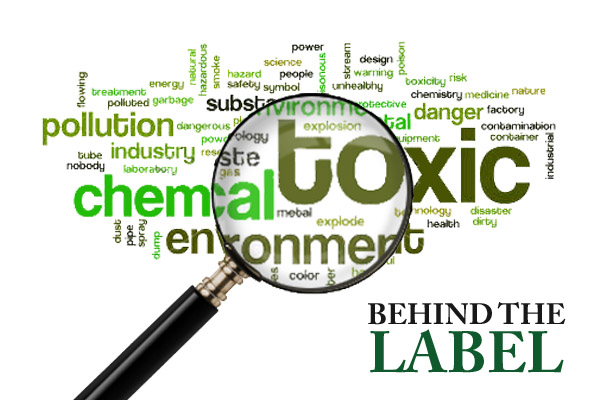Behind the Label: Gillette Mach 3 Shaving Gel

Wet shaving with a blade is one of the oldest ways of removing unwanted facial and body hair. There are now a wide variety of shaving gels and foams on the market for both men and women. They look nice, they feel nice and some even smell nice. But they can contain some not-so-nice ingredients by Pat Thomas
The Mach 3 range of shaving products and razors is the flagship line of industry leader Gillette. Helped along by a four-year global advertising campaign featuring David Beckham, it has conclusively carved its way into the male psyche. But would the ‘epitome of the well-groomed man’ be so enthusiastic about the range if he knew that Mach 3 shaving gel contained several skin irritants, four potential carcinogens, three central nervous system poisons and two reproductive toxins?
The £40m Beckham is earning from the campaign might pacify his conscience somewhat. But for most average men, for whom shaving is a daily necessity, there may be more important things than being the best-looking corpse in the graveyard.
M for metrosexual… and money
Men’s grooming habits have shifted radically over the last few years and continue to change at a dramatic rate. Today market’s is booming as more men are buying products for themselves rather than relying on female partners, friends or relatives to purchase them, or secretly raiding their products. Manufacturers know this and are keen to exploit it with advertisements that link the purchase of their products with the promise of promotion at work, better performance in sport and an irresistible attraction to the opposite sex.
Men’s increased interest in grooming has given rise to a new marketing niche, the metrosexual: a modern, urban man in tune with his sensitive side, grooming and fashion needs and social awareness. It’s a gag-worthy concept, but its power is undeniable. In the last year the men’s grooming market in the UK raked in £519m.
While deodorants (£225m) and fragrances (£99m) accounted for the lion’s share of this, shaving products came a respectable third in sales terms, yielding £61m. Gillette is far and away the UK’s most popular shaving brand (and the biggest selling globally), accounting for more than two thirds of the market in this country.
Sidebar: Ingredients
Aqua, palmitic acid, triethanolamine, isopentane, glyceryl oleate, stearic acid, parfum, isobutane, sorbitol, hydroxyethylcellulose, polytetrafluoroethylene, tocopheryl acetate, propylene glycol, aloe barbadensis leaf juice, silica, BHT, CI 59040, CI 42090.
Palmitic acid
Purpose: Emulsifier
Adverse effects: Contact dermatitis
Triethanolamine
Purpose: Detergent; surfactant
Adverse effects: Contact dermatitis May contain carcinogenic impurities
Isopentane
Purpose: Solvent
Adverse effects: Breathing difficulties; Has anaesthetic effect on the skin; Dry skin; contact dermatitis, Altered heart rhythms; Dizziness; headaches; Irritating to nose and throat A major component of gasoline vapour, and a chemical relative of isobutane (see below).
Glyceryl oleate
Purpose: Emulsifier, Emollient
Adverse effects: Skin allergies; dermatitis
Stearic acid
Purpose: Emulsifier
Adverse effects: Skin allergies
Parfum
Purpose: Fragrance
Adverse effects: Allergen; Triggers asthmatic reactions; Skin irritation; Headache; mood swings; depression; forgetfulness. ‘Parfum’ is a collective name given to hundreds of different chemicals used to produce fragrance in cosmetics and toiletries. Most are neurotoxic and many are persistent (ie, they don’t break down in the environment and they accumulate in human tissue and breast milk). Artificial musks, common ingredients in fragrances and toiletries, are hormone-disrupting.
Isobutane
Purpose: Propellants
Adverse effects: Headache; Mood swings ;Nausea; vomiting; dizziness; High doses can cause convulsions and coma These highly flammable volatile organic chemicals accumulate in human breast milk. While isobutane doesn’t destroy the ozone layer, it does contribute to the formation of ground-level ozone, or smog, which can cause serious breathing problems.
Polytetrafluoroethylene(PTFE)
Purpose: Film former; Friction reducer
Adverse effects: Carcinogenic; Birth defects; Weakens immune system. Also known as Teflon, this chemical belongs to the same family of perfluorinated chemicals (PFCs) as Scotchguard (now withdrawn from the market for safety reasons) and a range of other fabric treatments such as Stainmaster and Gore-Tex. A recent report by the US pressure group the Environmental Working Group on the PFC perfluorooctanoic acid revealed that it can be found in the blood of some 90 per cent of US citizens. PFCs are indestructible and widespread in the environment, and some observers believe that their effect on humans may make DDT look safe by comparison.
Propylene glycol
Purpose: Solvent
Adverse effects: Penetration enhancer Propylene glycol alters skin structure, allowing other more toxic chemicals to penetrate more deeply into the skin, and eventually the bloodstream.
BHT – butylated hydroxytoluene
Purpose: Antioxidant
Adverse effects: Contact allergies; contact dermatitis Potential carcinogen; May cause birth defects If absorbed, BHT can accelerate the breakdown of vitamin D, which helps maintain immunity and healthy bones and teeth.
CI59040, CI 42090
Purpose: Colourings
Adverse effects: Skin irritation 42090 is a potential carcinogen 59040 is an irritant to the mucous membranes of the eyelids, mouth, nose, respiratory tract and genitals; the EU does not allow it in any preparations that come into contact with these areas 42090 is also known as FD&C blue 1, CI 59040 as D&C green 8; both are synthetic coal tar dyes.
- This article first appeared in the February 2005 edition of the Ecologist.












